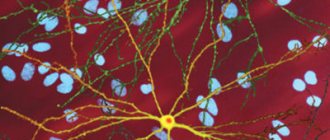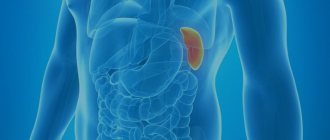A group of diseases caused by streptococci with infectious lesions of the skin is called streptoderma. Purulent inflammatory processes begin to develop in different layers of the skin, caused by pyogenic bacteria. Without timely treatment, the patient may develop serious complications that pose a serious threat to health.
Children are most often exposed to streptococcal skin diseases. At an early age, the body’s immunity is still weak and not as well developed as in adult patients. A minor abrasion or scratch will be enough for bacteria to enter the child’s delicate skin.
Classification of streptoderma
The disease is usually divided into several types, depending on the depth of the inflammatory process.
The surface type includes:
- paronychia;
- inflammation of an erysipelas nature;
- toxic shock caused by streptococcal syndrome;
- papulo-erosive and intertriginous streptoderma;
- crevice impetigo;
- acute diffuse disease.
With a deep form of development of pathology, cellulite and vulgar ecthyma are distinguished. Clinical forms are divided into several types, depending on the type of pathogen.
There are three main stages in total:
- Initial
. Characterized by small rashes with pus. Within 24 hours, red spots turn into small blisters with a purulent center. - Non-bullous.
The next stage occurs after severe damage to the skin; after the blisters burst, the formation of streptococcal ecthyma begins. Small ulcers appear at the site of acne, and after a few days they dry out completely. - Chronic.
The last form of the disease is often observed with improper therapy. When the body's protective properties decrease, regular rashes occur, causing discomfort and acute pain.
If you suspect the development of streptoderma, an urgent visit to a dermatologist is required. A timely examination helps to prescribe an effective course of treatment and minimize the possibility of subsequent complications or progression of the disease to the next stage.
Classification
The main microorganisms that cause pyoderma are streptococcus (Streptococcus pyogenes) and staphylococcus (Staphylococcus aureus). The percentage of diseases caused by other microflora (pseudomonas or Escherichia coli, pseudomonas infection, pneumococci, etc.) is very small.
Therefore, the main classification according to the nature of the pathogen is divided into:
- staphyloderma - purulent inflammation;
- streptoderma - serous inflammation;
- strepto-staphyloderma - purulent-serous inflammation.
In addition, any pyoderma differs in its mechanism of occurrence:
- primary - manifested on healthy skin;
- secondary - which has become a complication of other diseases (most often accompanied by itching).
In addition, pyoderma is divided according to the depth of infection. Therefore, the general classification of pyoderma looks like this:
- with superficial depth of infection (streptococcal impetigo, syphilide-like impetigo, bullous impetigo, intertriginous impetigo (slit-shaped), annular impetigo, streptococcal impetigo, superficial panaritium, dry streptoderma);
- with deep penetration (acute streptococcal cellulitis, vulgar ecthyma).
Staphyloderma includes:
- with superficial depth of infection (superficial folliculitis, ostiofolliculitis, acne vulgaris, sycosis vulgaris, epidemic pemphigus of newborns);
- with deep penetration (deep folliculitis, furuncle, furunculosis, carbuncle, hidradenitis).
Strepto-staphyloderma includes:
- with superficial depth of infection (impetigo vulgar);
- with deep penetration (chronic ulcerative pyoderma, chancriform pyoderma).
Causes of streptoderma
The skin of any person is always covered with a large number of opportunistic bacteria that do not pose a threat to health. This position, on the contrary, strengthens the skin’s ability to fight pathogens, which include streptococci.
As long as the immune system is not weakened, the skin acts as a reliable barrier and bacteria are not capable of causing harm. But when the protective properties of the body are weakened, there is a threat of the formation of streptoderma.
Decreased immunity may occur for the following reasons:
- the presence of other chronic pathologies;
- regular stress, poor sleep, excessive physical activity;
- sudden hypothermia or, conversely, overheating of the body;
- helminthiasis;
- previously suffered viral diseases.
Failure to maintain personal hygiene or mechanical damage to the skin can also cause the formation of an infectious disease.
Risk factors are:
- poor working conditions, such as being too hot, humid or stuffy;
- changes in hormonal levels;
- being overweight;
- poor nutrition;
- diabetes and other endocrine diseases.
Sometimes the causative agent can be low-quality personal care products or cosmetics. Streptoderma can contribute to the development of other scratching diseases due to severe skin itching.
Causes of pyoderma
Frequent causes of pyoderma are hypothermia and overheating of the body under production conditions.
When the body cools, blood circulation is disrupted, swelling of the skin occurs, sebum secretion and sweating decrease, as a result, the skin becomes dry and flaky, making it easily susceptible to injury and infection.
Overheating of the body leads to loss of water and chlorides (mineral salts), the latter affecting the vascular system and the functions of the kidneys and skin.
The possibility of pyogenic infection can be increased by additional irritants like oils and other contaminants.
The skin is able to destroy microorganisms that fall on its surface due to the acidity of the skin (pH), the so-called “acid protective coat of the skin.” Bacterial infection occurs faster in those areas of the skin where the pH is higher - these are the armpits, interdigital folds of the feet, and inguinal folds. Therefore, pathological changes occur more often in these places.
to the begining
Ways of infection of streptoderma
Regardless of the form in which the disease occurs, its infectious nature implies rapid transmission.
Infection can occur in one of the following ways:
- close contact with an infected patient, such as shaking hands, kissing or hugging;
- received injury to the skin in the form of an insect bite, burn or cut;
- contact with a surface on which there is a trace of contact with a sick patient, this could be door handles in public places, handrails in transport, cutlery or bath accessories;
- by airborne droplets from sneezing or coughing.
When a patient is in a large group, an outbreak of the disease can very quickly lead to a quarantine regime. Therefore, when primary signs of suspected streptoderma appear, the person must immediately be isolated from others. The incubation period can last up to two weeks. At the same time, people who were in direct contact with the sick patient are being monitored.
Symptoms of streptoderma
The disease does not appear immediately. In the first seven days, characteristic symptoms may be absent, and the first signs appear only in the second week:
- rashes appear that form in groups;
- oval-shaped spots with a reddish tint, covered with small scales, appear on the skin;
- in place of the spots, small pimples very quickly appear, similar to bubbles, filled with a cloudy white or yellow liquid;
- within 24 hours, pimples burst, and in their place a dried crust forms;
- after some time, the crusts peel off, and red skin becomes visible underneath;
- The affected areas of the skin return to normal over time.
Purulent lesions of an infectious nature are most often localized on the face and arms, less often on the legs, back and buttocks. Symptoms may vary, depending on the stage of the disease and its form. An important role is played by the patient’s immunity and the presence of other chronic pathologies that contribute to the weakening of the body’s protective properties.
General weakness and drowsiness may be added to the listed symptoms. Often the rashes are accompanied by nausea and aching pain in the muscles. The temperature may rise slightly and unbearable itching may appear in the areas where acne is located.
"Dermatovenerological dispensary No. 6"
Streptoderma (streptococcal pyoderma) is an infectious-allergic disease.
The disease occurs when streptococcus and its waste products enter the thickness of the skin.
The main manifestation of the disease , regardless of the patient’s age, is the formation of purulent elements on the surface of the skin, which have a characteristic round shape and a flaky surface. There are clinical forms of the disease, depending on the size of the pathological focus, their number and area of distribution.
Causes of streptoderma
The causative agents of the disease - microorganisms of the streptococcus family, are typical representatives of the opportunistic microbial flora of the body - with sufficiently intense local immunity, integrity of the skin and mucous membranes, normal functioning of the body's immune system as a whole, the active development and spread of this organism is limited, and the disease does not develop.
The occurrence of streptoderma is always associated with a violation of the integrity of the skin (microtrauma or abrasion is sufficient for infection to penetrate), changes in local immunity and disruption of the activity of the body’s immune system as a whole.
Causes and risk factors for the development of streptoderma
With this disease, as with any streptococcal infection, there is an incubation period. When streptococcus enters the body, the typical clinical picture of streptoderma develops only 7 days after infection .
After the incubation period is completed, phlyctenes . These specific skin rashes are a hallmark of streptoderma.
Predisposing factors, the presence of which increases the likelihood of developing the disease, are:
- neglect of the rules of personal hygiene;
- acute and chronic fatigue;
- stressful situations;
- any conditions that may cause decreased immunity;
- insufficient amount of vitamins in the patient’s food and his body;
- skin injuries (even the most minor ones).
The microorganism can enter the human body through household contact - the infection is transmitted through dishes, clothing, household contacts, toys, and also through dust that contains streptococci.
During the hot season, the infection can be transmitted by insects that carry pathogens on their paws.
During the cold season, there is often a seasonal increase in the incidence of streptoderma, coinciding with an increase in the incidence of scarlet fever and tonsillitis - this situation is explained by the fact that the cause of all diseases is the same microorganism.
Clinical symptoms and localization of streptoderma
The main manifestations of the disease are:
- The appearance on the surface of the skin of small bubbles filled with a clear but quickly becoming cloudy liquid.
- Most often, the rashes are localized on the face, back, limbs, and lower torso.
- Skin itching (often an unbearable burning sensation).
- Skin pigmentation at the site of “old” foci of the disease.
- General malaise – poor health, lethargy, weakness, lack of appetite.
Depending on the location of the rash, there are several clinical forms of streptoderma:
- streptococcal impetigo - manifests itself as single scattered rashes (phlyctenas), which are localized on the skin of the face, torso, limbs, and tend to merge. The lesions do not penetrate deeper than the basal layer of the skin; after opening the phlyctena, thin gray crusts form on the surface of the skin, leaving bluish-pink spots after they fall off;
- bullous impetigo - manifests itself as large-sized conflicts, after opening which superficial erosions open on the skin, prone to increasing the surface of the lesion. Such elements most often form on the hands, feet and legs;
- streptococcal infection (angular stomatitis, slit-like impetigo) - manifests itself as conflicts located in the corners of the mouth. The primary element of the rash very quickly turns into linear cracks, covered with yellow-honey-colored crusts that disappear without a trace, but are prone to reappear. In addition, slit-like impetigo may appear at the wings of the nose or near the outer edge of the palpebral fissure. The disease may be accompanied by severe itching and salivation, which provoke the spread of the infectious process over the skin of the face, refusal of food due to the inability to open the mouth;
- Streptococcal lichen in children - occurs most often on the skin of the face. Peeling lesions of pink or white color appear, having a rounded shape and clearly defined boundaries. Elements of the rash may decrease under the influence of sunlight, but previously affected areas of the skin cannot tan normally;
- tourniol (streptoderma of the nail folds) - often occurs in children who are accustomed to biting their nails. In this case, conflicts appear around the nail plates, which open up to form a horseshoe-shaped erosion;
- streptococcal diaper rash - damage to the skin folds occurs, on which small conflicts are formed that are prone to merging. After opening, wet surfaces of bright pink color form on the skin.
Prevention of streptoderma
Prevention of streptoderma is:
- in maintaining personal hygiene,
- limiting contact with those suffering from any streptococcal infection,
- timely treatment of infectious diseases.
It is very important to promptly and correctly treat any minor injuries and skin damage. If the affected areas of the skin are affected, they should not be exposed to moisture, as this may contribute to the spread of the disease.
We invite you to an examination and consultation at KVD No. 6.
Our doctors are ready to provide qualified medical care and give advice on all issues that concern you.
Our address: St. Petersburg, st. Letchika Pilyutova, 41
Opening hours: • on weekdays 9.00–20.00 • Saturday (emergency care) 9.00-15.00
Registration phone number: 744-2715 ✆
Diagnosis of streptoderma
If characteristic signs of a skin disease appear, an immediate visit to our Your Health clinic in Moscow is required.
At an appointment with a dermatologist, an initial examination will be carried out followed by the appointment of the necessary diagnostic measures, the purpose of which is to confirm the preliminary diagnosis:
- taking an anamnesis, during which the doctor will ask leading questions about the onset of symptoms, bad habits and other chronic pathologies;
- a survey will be conducted about the place of work and social and living conditions will be clarified;
- at the next stage, an examination of the affected areas of the skin is carried out, with an assessment of the localization, degree of prevalence and type of rash;
- referral for bacteriological culture to collect the contents of papules and ulcers;
- The test reveals the sensitivity of bacteria to various types of medications, which facilitates the correct selection of antibiotics for therapy.
Depending on the results of the study, additional tests may be prescribed in the form of biochemical blood sampling, determining the presence of syphilis and thyroid hormones. General analysis of urine and feces for worms.
Diagnostics
The disease in the photo bears a strong resemblance to a number of other diseases. For example, it is very difficult to distinguish streptoderma from herpes from a photo or appearance. The method of bacteriological culture of scrapings helps the doctor clarify the nature of the skin rash and help make a diagnosis of streptoderma.
Streptoderma in children
According to statistics, children are much more likely to develop streptoderma than adult patients. This is due to more delicate skin and not fully strengthened immunity.
The disease in young patients occurs with some distinctive features:
- body temperature rises;
- most often papulo-erosive streptoderma and streptococcal impetigo are determined by type;
- lymph nodes increase in size;
- general intoxication of the body begins;
- The localization of rashes is most often observed on the thighs, scrotum and buttocks.
The presence of blue-red pimples with a liquid center indicates papulo-erosive streptoderma. The skin around the rash becomes very inflamed and red. When the bubbles burst, weeping crusts form.
Streptococcal impetigo is one of the most contagious skin infections. If one of the children in a kindergarten or school class gets sick, all the other children who are in contact with the sick child will most likely become infected.
Purulent rashes appear on the wings of the nose, mouth and face. The disease may be accompanied by a complication in the form of inflammation of the lymph nodes.
Pathology in children is determined by microscopy of smears taken from infected areas of the skin and subsequent bacteriological analysis. Based on the results obtained, therapy is prescribed. The selection of medications is done very carefully; the doctor in our clinic takes into account the general condition and individual characteristics of the child.
If a child has an infectious skin lesion, parents should follow the recommendations given by the dermatologist:
- limit contact with water, which contributes to the development of infection;
- explain to the child that wounds should not be scratched;
- exclude flour dishes and sweets from the diet;
- use underwear made from natural fabrics and change it every day.
Until complete recovery, the child is prohibited from being allowed into the children's group. If you follow all the doctor’s instructions, the course of treatment will go quickly and without serious complications.
Treatment
- Treatment in children
Treatment of omphalitis is carried out only by a doctor. In the initial stage, local use of medications is possible: washing the wound with a solution of hydrogen peroxide, treatment with brilliant green, iodine solution, methylene blue solution and various local antimicrobial drugs. Treatment of pyoderma in children involves the use of broad-spectrum antibiotics, infusion therapy, and immunomodulators. In the initial stages of pyoderma, it is possible to treat pyoderma with local means - solutions of boric and salicylic acids, sanguiritin, eucalymin, tomicide, cyminal and others in the form of solutions, lotions, under a bandage. See also our specialist’s answer to the user’s question: Pyoderma in children, how to cure it? - Treatment in adults
In adults, pyoderma is also treated by a doctor. For mild pyoderma, local medications are used (see above); for moderate severity, broad-spectrum antibiotics and sulfonamides are added to local treatment.To increase the body's resistance in the treatment of pyoderma, the immunomodulatory drug Thymogen is used. These are Thymogen cream, which is applied to the affected areas, and Thymogen solution for injection.
to the begining
Calling a dermatologist to your home to treat streptoderma
Our clinic Your Health in Moscow offers all patients the paid service of calling a dermatologist to your home. To do this, you need to call the specified phone number specifying the reason for the request. The doctor will arrive at your place of residence on the day of your visit. An appointment in a comfortable home environment will allow you to receive qualified assistance with significant savings in free time.
Other advantages of calling a dermatologist at home include:
- the opportunity to take most of the required tests without leaving home;
- arrival of the dermatologist at the pre-agreed time without delay;
- absence of distractions that arise during a personal visit to the clinic;
- a preliminary diagnosis is made already at the first visit;
- no risk of infecting others through airborne droplets.
The service will be most relevant for people with a lack of time, parents of small children, elderly patients who have difficulty moving and patients with limited physical capabilities.
What it is?
Pyoderma is a pustular skin disease caused by pyogenic bacteria, the main of which are staphylococci and streptococci, and a little less frequently - Proteus vulgaris and Pseudomonas aeruginosa. Pyoderma is more common in childhood and among workers in certain types of industry and agriculture.
An increase in incidence is observed in the autumn-winter period - the cold and damp season. The humid climate of hot countries is the reason for a large number of patients with mycoses and pustular skin diseases.
Complications of streptoderma
The disease can cause serious harm to the health of patients suffering from immunodeficiency and people prone to frequent allergies. If, when the characteristic symptoms of streptoderma appear, the patient does not seek help in time, then the risk of developing complications increases significantly, which include:
- when an infection enters the bloodstream, sepsis may form or blood poisoning may begin;
- the appearance of deep wounds from non-healing ulcers;
- damage to internal organs by staphylococci, rheumatism and nephritis may develop;
- dangerous increase in body temperature;
- intestinal dysbiosis;
- damage to the fetus during childbirth if the mother has infectious rashes on her body;
- the appearance of thrombophlebitis.
Quite often, after severe stages of skin damage, scars form that remain forever. A cosmetic defect subsequently requires additional expensive procedures to smooth out the outer layer of the skin.
Why should you contact our clinic?
Dermatologists of the highest category
Experienced dermatologists in Moscow. Experience of specialists from 15 years.
Modern equipment
Modern equipment from the world's best manufacturers.
Expert class equipment
Ultrasound is performed using expert-class equipment manufactured by General Electric, SONY, Mindray.
Tests and ultrasound on the day of treatment
Tests, x-rays, ultrasound with interpretation, dressings on the day of treatment in Moscow.
Consultations for adults and children
A network of dermatological clinics in Moscow. Clinics near the metro.
Experienced doctors
Our experienced doctors with over 15 years of experience. Candidates of Medical Sciences.
How to treat pyoderma?
Treatment of pyoderma is carried out under the supervision of qualified specialists. As a rule, the doctor prescribes medications for external and internal use, including restoration of immune strength.
General uses:
- diagnosis and treatment of concomitant diseases (hormonal imbalance, diabetes, immunodeficiency);
- elimination of adverse effects on the skin (damage, pollution, exposure to high or low temperature);
- nutrition with a limitation of refined carbohydrates, a predominance of proteins, plant fiber, and fermented milk products;
- prohibition of washing (shower, bath), you can only wash local unaffected areas of the skin with great care so as not to spread the infection;
- trimming hair in the affected area;
- treating the skin around the ulcers twice a day with a solution of salicylic alcohol.
A special low-carbohydrate diet must be followed. The following medications are used to treat various types of pyoderma:
- It is recommended to carry out antibiotic therapy using semisynthetic macrolides, Penicillin, Tetracycline, aminoglycosides, and latest generation cephalosporins);
- in case of severe development of the disease, glucocorticosteroid drugs are used (Hydrocortisone, Metipred, etc.);
- for pyoderma, hepatoprotectors are prescribed (Essentiale Forte, Silibor, etc.);
- the use of angioprotectors (Actovegin, Trental) is recommended;
- cytostatics (Methotrexate) are prescribed.
To antisepticize erosive ulcerations, it is necessary to use ointments with a bactericidal effect. Most often used in the treatment of pyoderma:
- zinc ointment or salicylic-zinc paste;
- Levomekol;
- tetracycline ointment;
- lincomycin ointment;
- erythromycin ointment;
- hyoxysone ointment, etc.
In addition, there are drugs for complex treatment that have antibacterial, anti-inflammatory and antifungal effects. The most popular ointments are Thymogen and Triderm.
When pyodermatitis is accompanied by the appearance of ulcers, the inflammatory foci should be washed with aseptics after removing the scab (Tannin, Furacilin, boric acid, Dioxidine, Chlorhexidine, etc.).
For carbuncles, boils, hidradenitis, you can apply a sterile bandage with Ichthyol + Dimexide, Chymotrypsin and Trypsin to the affected area. In addition, a Tomicide bandage is often applied to the affected parts of the body.
Prevention of streptoderma
A person at any age can be affected by an infectious skin disease. There is no guaranteed protection against this pathology, but there are a number of preventive measures, the observance of which helps reduce the risk of infection:
- rejection of bad habits;
- healthy lifestyle;
- correct rest regime;
- compliance with all generally accepted hygiene standards and sanitary rules;
- good nutrition;
- daily water treatments with shower;
- use of tar or resorcinol soap;
- timely change of underwear.
Exercising and frequent exposure to fresh air helps strengthen the immune system. In case of accidental damage to the skin, it is recommended to immediately treat the wound with iodine or hydrogen peroxide. You should try not to trigger chronic diseases if they are present and monitor the current state of the body, preventing possible exacerbations.
Types of streptoderma
The disease can occur in acute and chronic form. The first is distinguished by aggressive symptoms and clear manifestations in the form of rashes. The chronic form is characterized by regular exacerbations during a period of decreased immunity.
Streptoderma is divided into several types:
- intertriginous, when a rash forms in the skin folds and is accompanied by severe itching with a desire to scratch the affected areas, often observed in infants;
- dry, with the appearance of white or pink spots up to 5 centimeters in diameter, localized on the neck, arms and legs, after healing, scars often remain;
- the most common form of rash on the face, accompanied by rashes in the form of small blisters, the contents of which quickly flow out and a yellowish crust forms in their place.
The manifestation of characteristic symptoms, accompanied by rashes of various locations, indicates an infectious skin lesion. In such situations, an urgent visit to a dermatologist is required. If treatment is not started promptly, the disease can become chronic.
What is pyoderma?
Pyoderma is a disease of purulent skin lesions, most often caused by pyogenic (pyogenic) cocci - streptococci and staphylococci, which are constantly found on the skin and mucous membranes. In addition to these pathogens, there are other microorganisms on human skin, such as pseudodiphtheria bacillus, yeast-like fungi, etc., which can also cause disease under certain conditions. The name of the disease comes from the Greek py'on - pus and de'rma - skin). This is one of the most common skin diseases.
to the begining
Streptoderma in pregnant women
In the process of bearing a child, a woman undergoes a significant restructuring of her hormonal levels and a decrease in immunity. The body uses all resources for the development of the fetus. It is at this moment that the expectant mother is most vulnerable to the possibility of streptoderma.
The disease does not harm the health of the unborn baby; infection can only occur when streptococcus enters the bloodstream. Infection can get on the baby's skin during childbirth if there are infectious rashes on the woman's body. In this case, the disease can cause serious complications and threaten the child’s health.
Timely treatment will reduce all risks of infection during childbirth. Doctors will select the most gentle therapeutic course. All prescribed medications will not be dangerous for the baby. Most often, special creams and ointments are prescribed.
Treatment of streptoderma
The course of therapy involves the complex use of antiseptics, antibiotics, the choice of which depends on the type of pathogen, and special ointments. In some cases, additional medications may be prescribed in the form of tablets and injections. Skin itching is relieved with suprastin and telfast. To strengthen the immune system, take vitamins A, B and C.
Depending on the stage of development of the disease, opening of purulent rashes may be required. All related manipulations are carried out in a sterile operating room; operations at home are allowed. After successful opening of the abscesses, the resulting wounds are treated with aniline dyes twice a day. This will help prevent infection.
To speed up the healing process, you need to follow your doctor's recommendations:
- provide your own cutlery and dishes, exclude contact with household members;
- stop taking baths and showers;
- try to change bed linen more often and then wash thoroughly;
- Avoid visiting crowded places; it is advisable not to leave home at all until complete recovery.
It is allowed to use folk remedies, which include tinctures of Eleutheroccus, Echinacea and Leuzea. Admission should be carried out only after prior agreement with the attending physician. The effectiveness of treatment will depend on the individual characteristics of the body, age and current condition of the patient.
Elimination of skin lesions
If the disease has not become severe, treatment of streptoderma is carried out on an outpatient basis. If there are severe symptoms - deep erosion and necrotization of tissue, inflammation of the lymph nodes, etc. - the patient is admitted to a dermatological hospital. Therapy consists of:
- proper skin care, excluding washing with soap and water, to avoid spreading the disease to other areas;
- external treatment of affected areas with aniline dyes, application of ointments with antibiotics and keratolytic compounds;
- taking antibiotics in case of lymphangitis and severe intoxication;
- specific immunotherapy aimed at combating staphylococcal infection.
In addition, complex vitamins may be additionally prescribed, and at the end of the course of antibiotics, probiotic preparations may be prescribed to restore the intestinal microflora.
Prevention of streptoderma involves frequently washing the skin with soap and water. Research shows that soap solution destroys up to 95% of streptococci on the surface of the skin. Compliance with hygiene rules is especially important after contact with a person suffering from a pustular rash.
Diet for streptoderma
During the acute form of the disease, in addition to treatment with antiseptic agents and antibacterial treatment, it is required to adhere to a diet. The following foods should be included in your daily diet:
- legumes and nuts;
- lean meat, fish, eggs and a small amount of fresh cottage cheese;
- porridge;
- soups cooked in low-fat broth;
- fruits and vegetables;
- unsweetened compotes, decoctions and other drinks with low sugar content.
There are no strict restrictions on foods for patients with streptoderma, but doctors advise to refrain from eating fried foods, sausages, butter and hot seasonings. It is advisable to temporarily exclude from the daily diet all products that contain dyes and flavor enhancers.
Streptoderma and similar diseases
Based on external manifestations and test results, not only a diagnosis of streptoderma, but other pathologies of the skin can be established.
In terms of external signs, the diseases are similar to each other, but the treatment regimen is completely different:
- allergic dermatitis, characterized by severe itching not only in areas of the rash;
- lichen and herpes, viral manifestations with rashes localized in the waist and abdomen, accompanied by elevated body temperature;
- eczema, appears upon direct contact with an allergen or as a complication of chronic streptoderma;
- staphylococcal pyoderma, destroys the sebaceous glands, and in severe form can cause furunculosis;
- chickenpox, a viral pathology accompanied by rashes on various parts of the body;
- pityriasis versicolor, characterized by the appearance of brown or reddish spots, the skin in the affected areas begins to peel off.
To accurately establish the disease, it is necessary to undergo a detailed examination and pass the necessary tests. Based on the results, the pathogen will be identified and an accurate diagnosis will be made.
Prognosis for streptoderma
The disease responds well to treatment and if the patient follows the doctor’s recommendations, the therapy will be successful and without complications. The main thing is not to try to get rid of rashes on your own, this can only cause harm.
Modern medications are highly effective and fight streptococcal infections well, which in turn allows you to quickly relieve the inflammatory process and overcome the disease.
If you do not take any measures and ignore the characteristic symptoms, the disease can develop into a chronic form, which carries with it serious complications, infection of internal organs and even blood poisoning, which is especially susceptible to patients with weakened immune systems. Timely treatment eliminates all symptoms of streptoderma within a week.
Publication date: 2020-06-30
This article is posted for educational purposes only and does not constitute scientific material or professional medical advice.
Can it be treated at home?
- First of all, it is necessary to establish the nature of pyoderma. In other words, identify the causative agent of the disease and determine its sensitivity to antibiotics. After a course of antibacterial therapy (local use of antibacterial drugs in most cases is ineffective) against the background of normal multivitamin-mineral support (taking vitamins), such diseases usually go away. But pyoderma, as a rule, develops against the background of reduced immunological resistance or is provoked by diseases of the internal organs: stomach, intestines, liver, pancreas. Therefore, an in-depth examination is necessary.
to the begining









